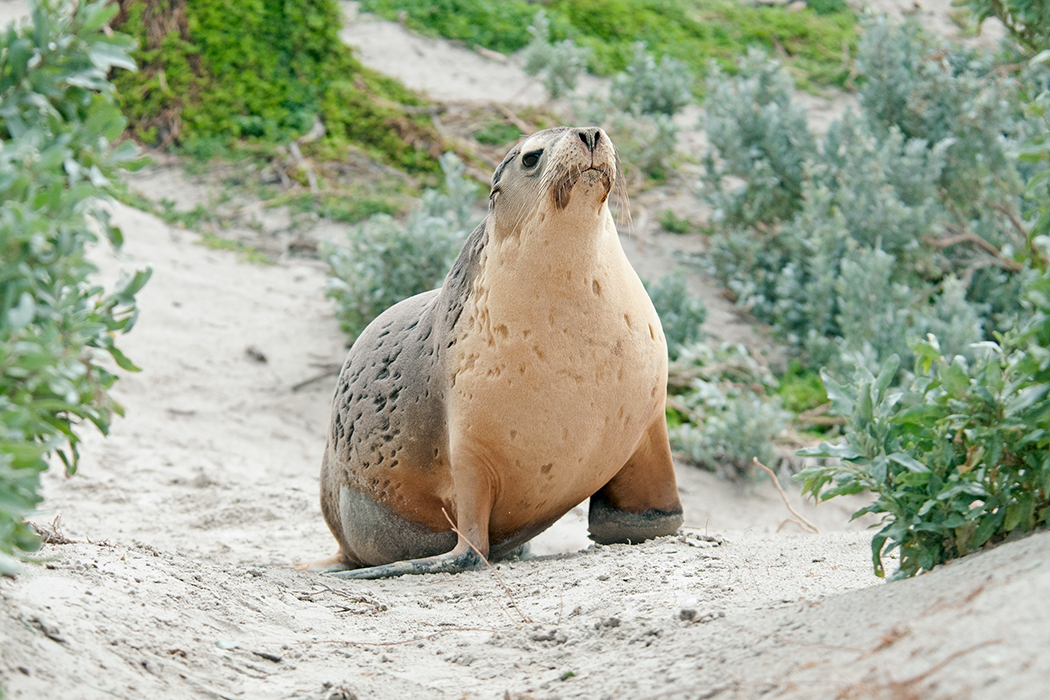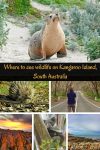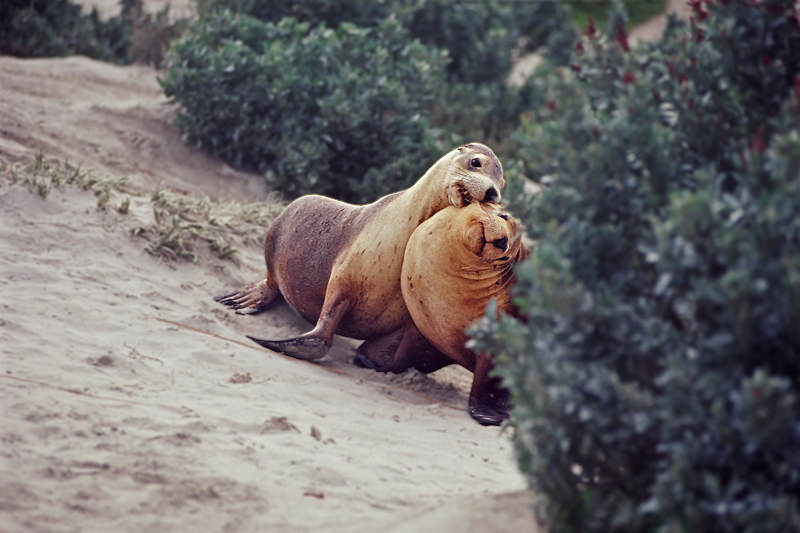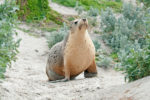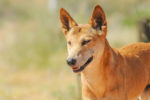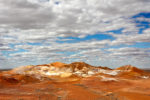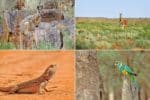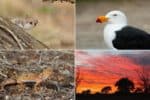My first encounter with Kangaroo Island animals was the scene of two young male sea lions battling it out within about 10 meters of me, almost 15 years ago. The power and proximity of these magnificent animals left me speechless as my mind processed the awesome encounter.
Awe is defined as an experience of such perceptual vastness that it requires your mental maps of the world to expand in order to assimilate it. And it’s this expansion happening in real time that gives you the sensation of bliss, of goosebumps running down your spine.
READ MORE: 50 Outstanding Safari Holidays Destinations Outside of Africa
Kangaroo Island is all about awe. From striking landscapes to close encounters with wildlife, Kangaroo Island will stay with you long after you leave.
Located just off the coast of South Australia and easily reachable from Adelaide, Kangaroo Island makes for a perfect weekend getaway.
After my first visit, I returned to Kangaroo Island several times, growing my list of encounters with Kangaroo Island animals. From seals and sea lions to koalas and echidnas to penguins and Black cockatoos, Kangaroo Island animals are as abundant as they are diverse.
So here’s a guide to Kangaroo Island animals that you can spot on your holidays, including some of my favourite images from several trips.
Australian Sea Lion
Probably the best-known Kangaroo Island wildlife attraction is the colony of Australian sea lions at the Seal Bay Conservation Park. Seal lions have been living on the island for thousands of years, much longer than our species. The colony on KI is the third-largest in Australia.
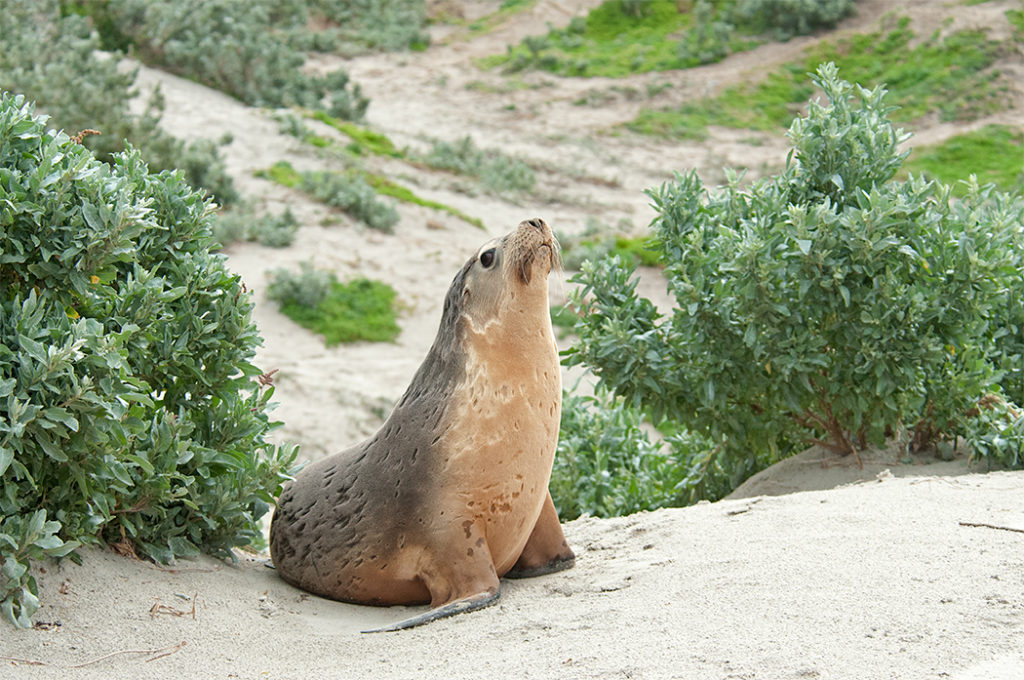
The colony is protected by the National Parks and Wildlife Services Department, and to meet Kangaroo Island sea lions, you have to take a ranger-guided tour (check the times here).
The tour starts at the Visitor Center and meanders through the wind-blown coastal bush crisscrossed with tunnels made by sea lions. When it’s cold on the beach, the sea lions come up to the shrubs, where it’s much warmer than on the sand.
Down on the beach, you can watch the sea lions doing what they do best (on land) – snoozing. Apart from the young males, that is. They often chase one another, practising their moves for when the time comes to make their mark in the seal society.
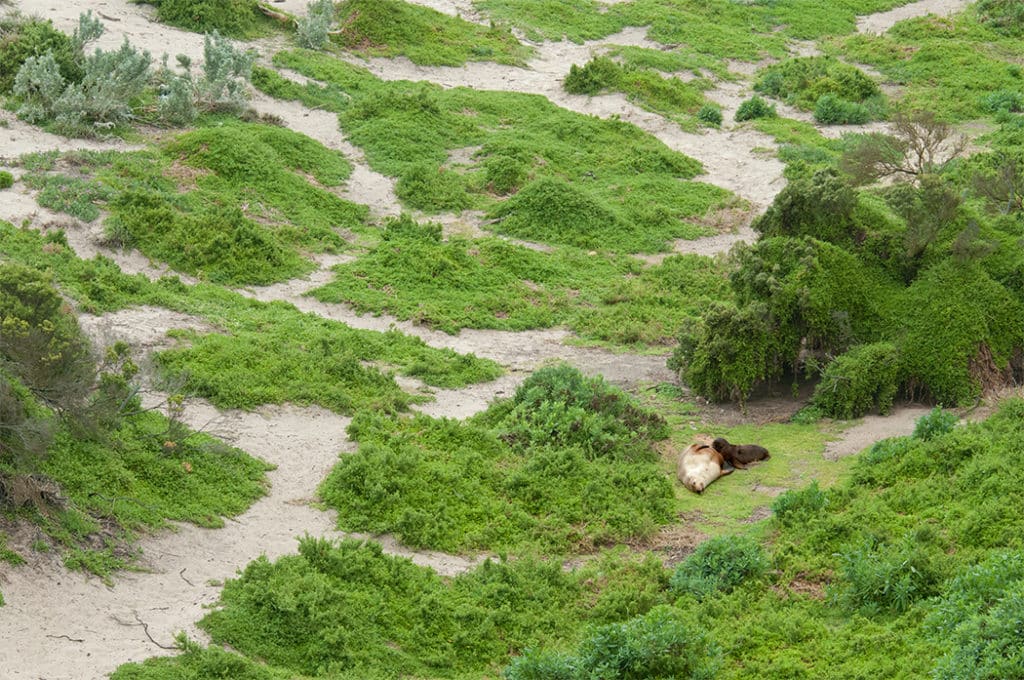
Sea lions have extremely flexible hind flippers that can be rotated forward and beneath the body. This enables them to easily move on land, unlike the seals that appear quite clumsy out of the water.
The best time to visit Kangaroo Island sea lions is around July-September when the pups are born. During my last visit in September, we were treated to the sight of two chocolate-brown pups giving themselves a swimming lesson in the surf.
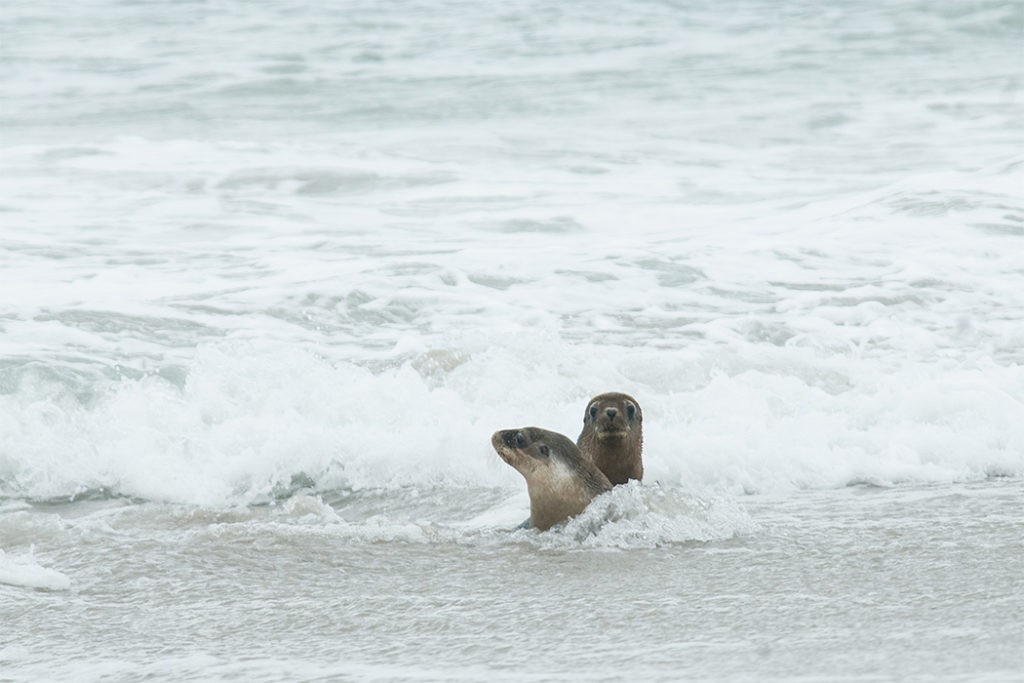
Once the formal tour is finished, you can take a self-guided walk along an elevated wooden walkway. The lions don’t come as close to the path here, but you get fantastic vistas of the broader landscape and get a good sense of the lions’ world.
There is a huge whale carcass half-buried in the sand. Amazingly, it belonged to a juvenile humpback whale, not a fully grown one.
Kangaroo Island Seals
Not far from Seal Bay is Cape du Couedic – home to Kangaroo Island seals. Their common name used to be the New Zealand fur seal, which was a misnomer because these seals are native to Australia. But since there is already a species named Australian fur seal, these guys were renamed the long-nosed fur seals.
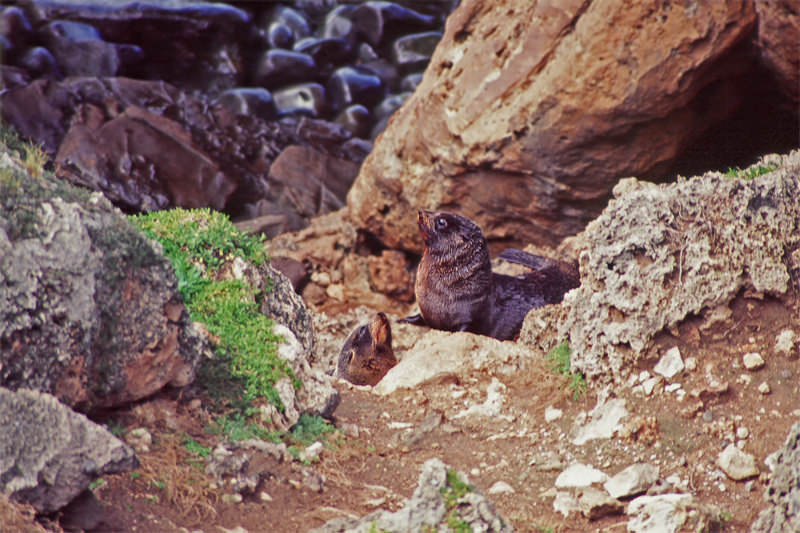
Cape du Couedic is a far less hospitable spot than Seal Bay. The fur seals live at the bottom of wind-swept cliffs where the waves crash into the rocks with relentless ferocity. The waves and the wind are responsible for creating one of the island’s well-known geological attractions – a rock arch known as the ‘Admiral’s Arch’ down below where the rocks meet the ocean.
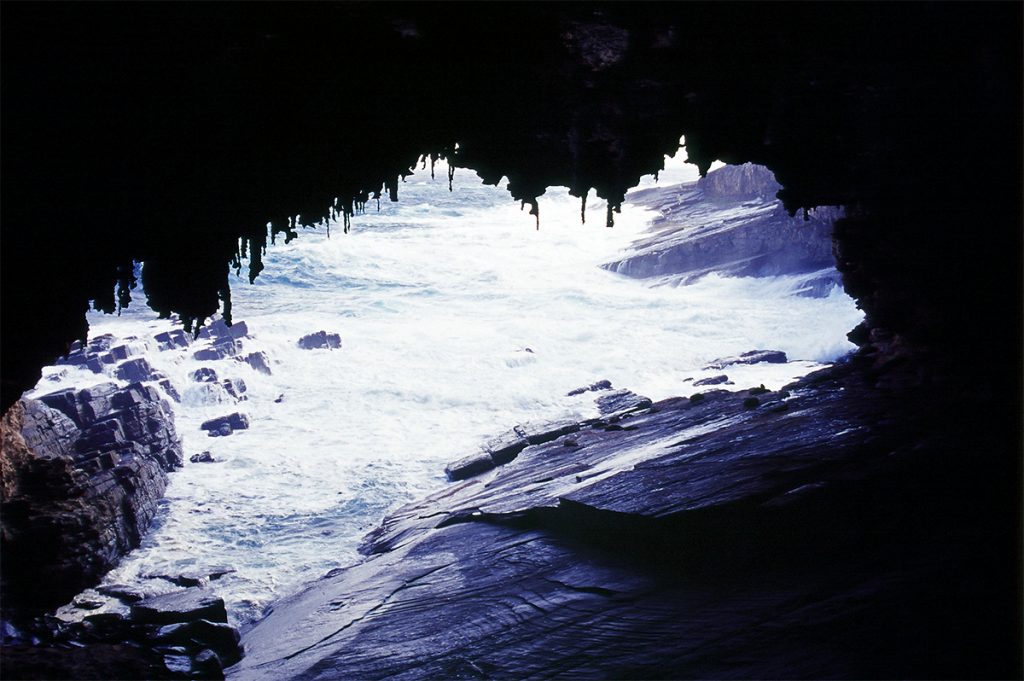
By the way, the stalactite-looking formations are the top of the arch are actually fossilised roots.
Seals and dramatic coastal rock formations seem to go hand in hand. Another well-known seal hotspot in Australia – Narooma, is also home to some very interesting rocks, like the famous Glasshouse Rocks on Narooma surf beach.
Koala
Kangaroo Island koalas were once considered a pest. Simply because there were so many of them on the island that conservationists believed they were negatively affecting the vegetation. But in the wake of the devastating fires of the 2019-2020 Black Summer that ravaged the island, almost 40,000 koalas are thought to have perished. The remaining population of Koalas on Kangaroo Island is estimated at around 8500 individuals.
My most memorable encounter with a koala on Kangaroo Island happened during an Armageddon-like period of heavy rains a couple of years before the fires.
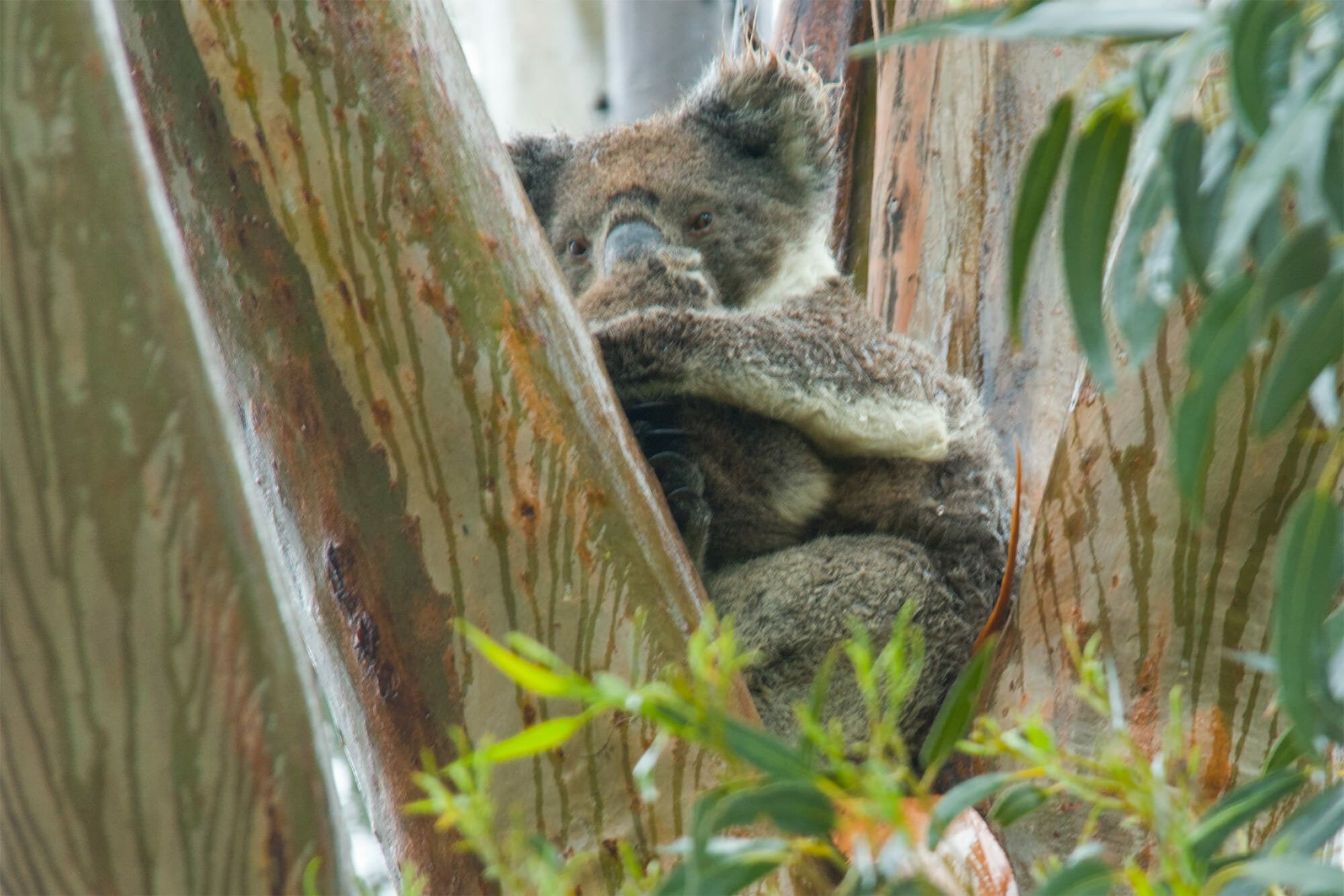
Looking for a cozy place to escape the deluge, we came to Seal Bay Cottages and Café. I got out of the car and dashed for cover at the reception. Surprisingly my friend didn’t follow me. I poked my head out and noticed her gesticulating excitedly next to a large tree under which we parked our car. Whatever it was that she was so excited about, it had to be good enough to stay out in the rain for. I jogged towards her getting my camera ready for action. “There’s a fluffy dude up the tree, but I can’t see what it is”, she offered in terms of explanation.
The fluffy dude turned out to be a wet koala that had wedged its fluffy bum into the fork of the tree and tucked its chin into its knees. When we came back to the tree later, we saw what she was guarding – an equally wet but fluffy baby. When the sun made a brief appearance, they unfurled themselves and began munching the leaves with impressive determination.
For more predictable encounters with koalas on Kangaroo Island, head to Hanson Bay Wildlife Sanctuary, where you can take a guided koala walk to maximise your chances of spotting one.
Kangaroo Island Kangaroo
Of course, a wildlife heaven like Kangaroo Island would have its own type of kangaroo. Kangaroo Island kangaroo is a subspecies of the Western grey kangaroo. It is smaller, darker, and furrier than its mainland cousins, from which they separated around 10,000 years ago.
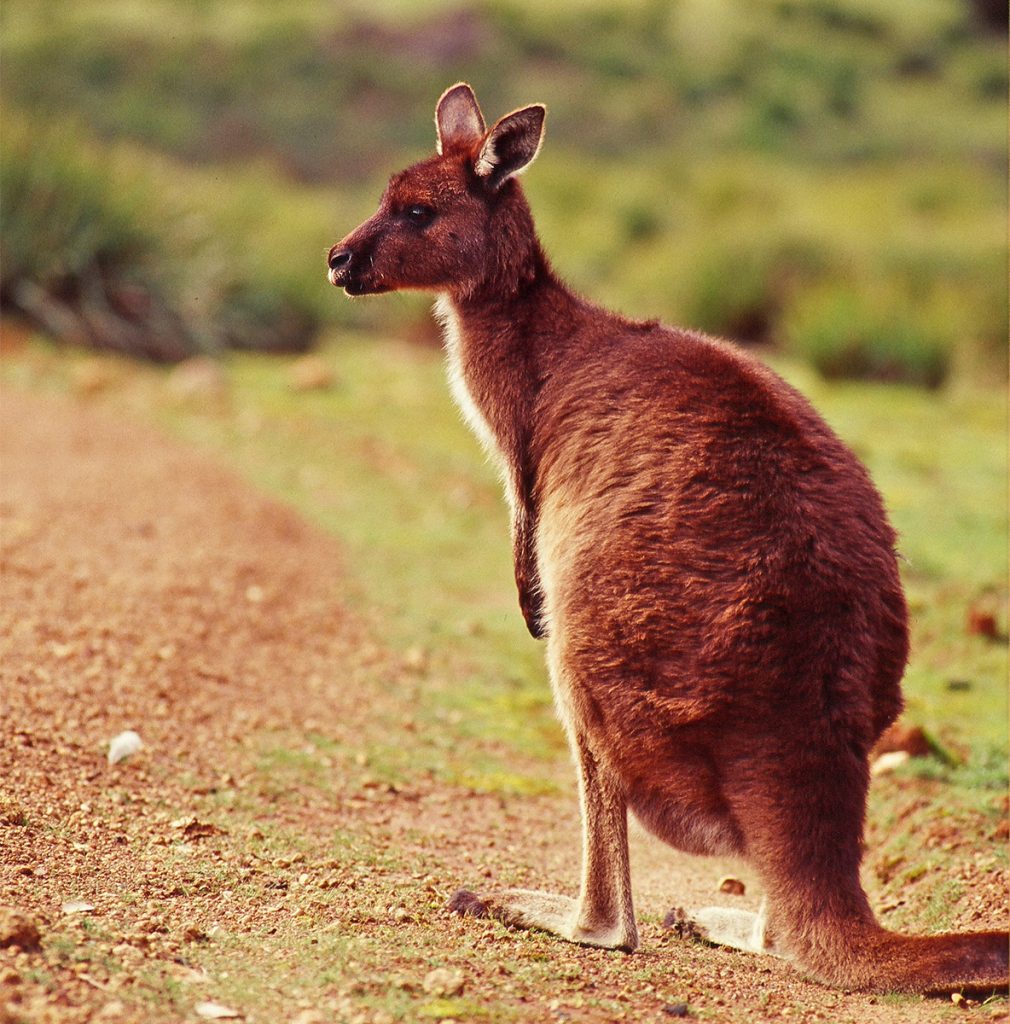
Because they’ve been isolated on an island without any large predators, Kangaroo Island kangaroo are quite numerous (similarly to the white wallabies in Tasmania’s Bruny Island).
Their population is estimated to be around 65,000 individuals. That’s 14 times higher than the human population on the island.
Kangaroos are found throughout the island (so please make sure to drive carefully), but the best place to watch them is in Flinders Chase National Park at the south-westerly tip of the Island, particularly around the Rocky River grasslands. These grasslands are a great place to see a few other species of Kangaroo Island wildlife.
Tamar Wallaby
Like the kangaroo, Tamar wallaby can be found all over the island, but the Rocky River grasslands are the best place to see them. The wallabies are much smaller than the kangaroo, so they won’t be difficult to tell apart.
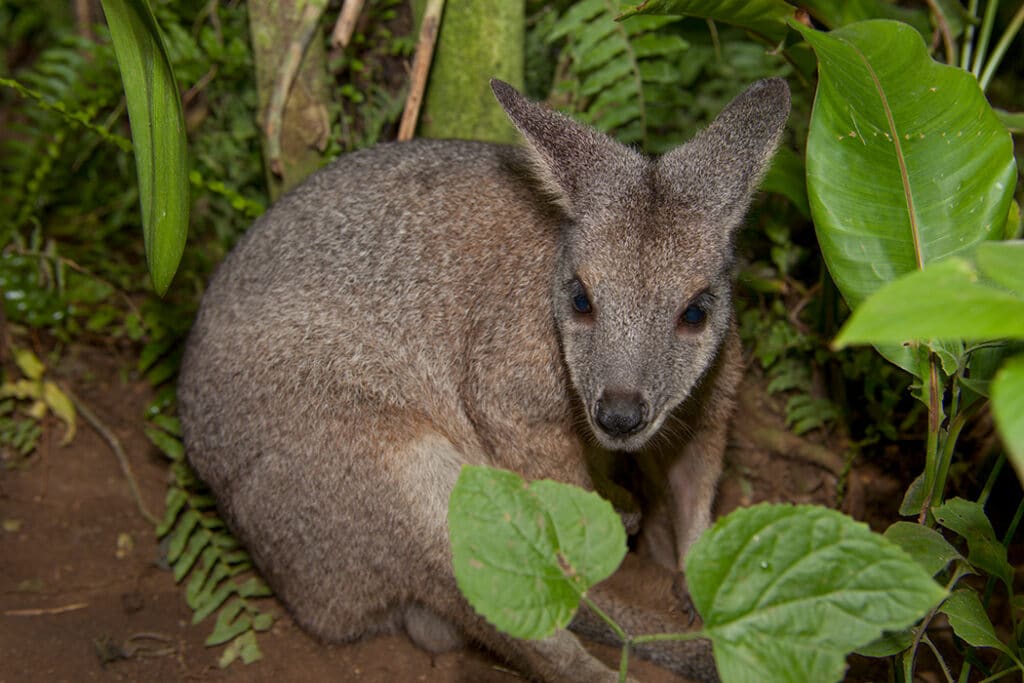
You can often spot them around the Park Headquarters and Visitor Centre, where they are accustomed to people and will often remain out in the open so that you can observe them from a close range. Another good spot is the Kangaroo Island Sculpture Trail in Penneshaw or the Wallaby Run dirt track, but check the condition of the road if there have been heavy rains recently.
Echidna
Kangaroo Island is home to both species of monotremes, Australia’s egg-laying mammals – the platypus and the short-beaked echidna. Platypus may be quite tricky to spot (try the Platypus waterholes in Flinders Chase National Park) as they are mostly active at dawn and dusk unless you happen to be in the Tasmanian Arboretum in north west Tasmania, where they seem to be active all day long.
But the echidnas, you can come across practically anywhere on Kangaroo Island. The more time you spend walking around, the higher your chances of finding them.
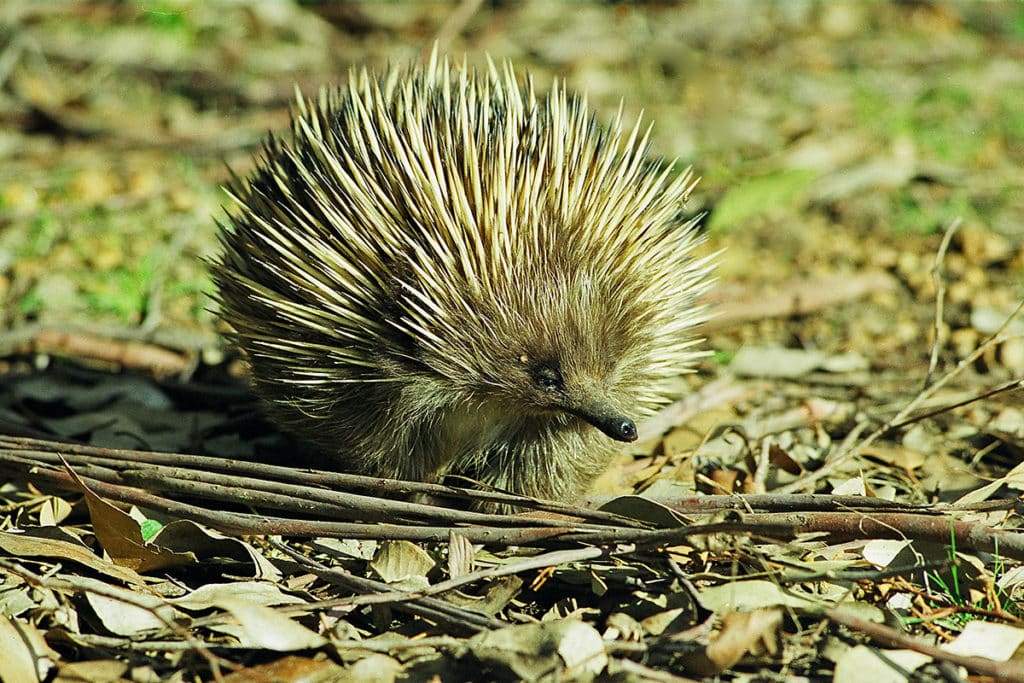
The best time to see echidnas is around October, during their mating season, when you can see a female followed by a string of males in what’s known as the ‘echidna train’.
Little Penguins
Naturally, the wildlife-watching opportunities on KI do not end after the sun has set. The ferry port of Penneshaw is home to the breeding colony of the world’s smallest penguins – appropriately named the Little penguins. Also known as Fairy penguins, these little birds spend their days hunting fish in the ocean and return to their burrows at night.
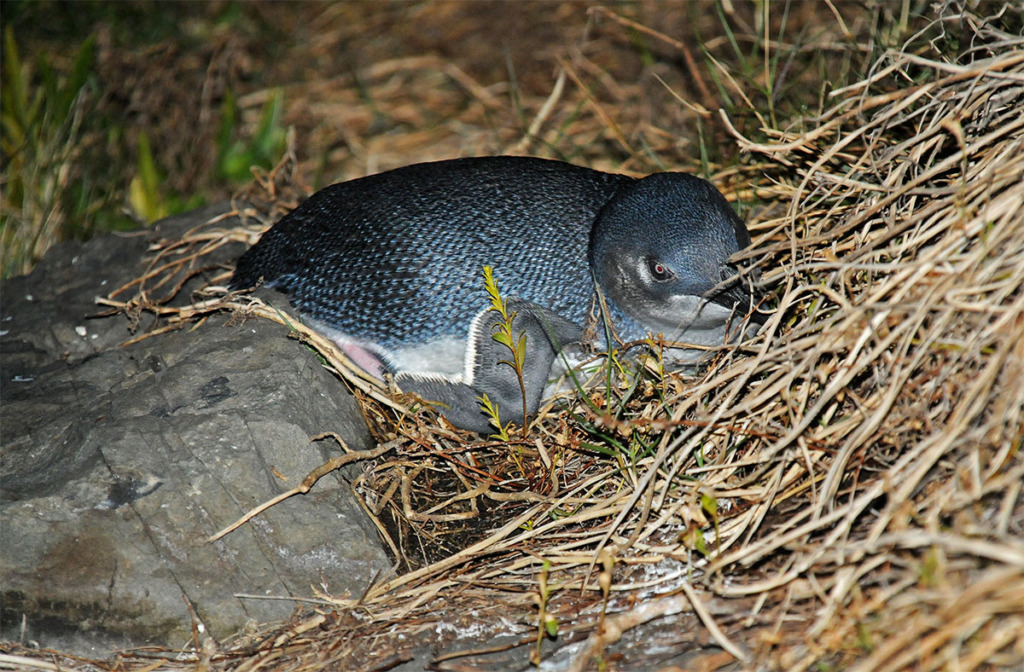
To see them, book a 60-min tour with Penneshaw Penguin Center. In the past, the penguins used the artificial burrows constructed for them along the coastline at Penneshaw, but now they seem to be more dispersed and it may take some walking around to locate them.
If you happen across the penguins on your own, make sure not to shine a bright light directly at them. As nocturnal birds, they are sensitive to light and will try to avoid it.
The best time to see echidnas is around October, during their mating season when you can see a female followed by a string of males in what’s known as the ‘echidna train’.
Cape Barren Goose
The Rocky River grasslands in Flinders Chase National Park are also home to the breeding colony of Cape Barren Geese – one of the world’s rarest geese.
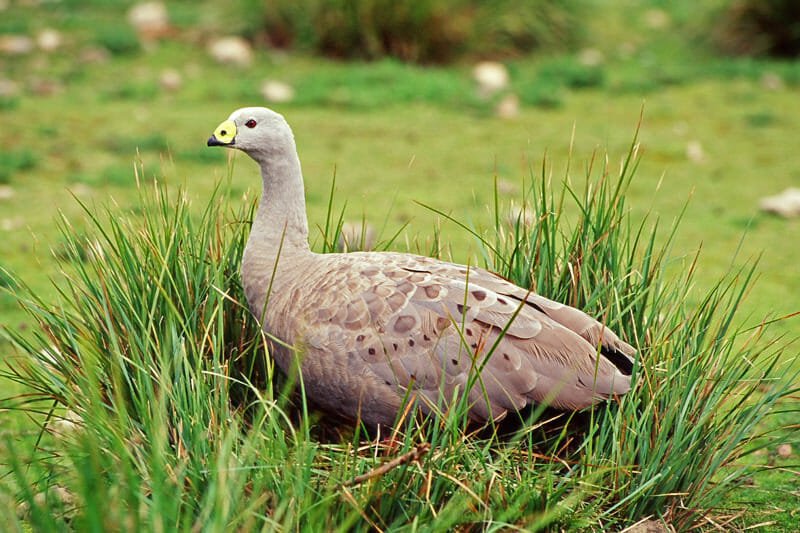
At one point, these handsome birds were heavily hunted, which led to a dramatic population reduction. The birds were introduced to Kangaroo Island in the 1920s, and the island’s population is quite tame and can be easily viewed and photographed.
The best time to see the Cape Barren geese is during their nesting season. They begin establishing their nesting territories in Black Swamp in Flinders Case National Park around May.
They can also be found at Murray Lagoon, accessed via Seagers Road, and grazing in the paddocks on the Wisanger salt pans. To avoid disturbing the birds, it is best to view them from a comfortable distance of around 20 – 30 metres.
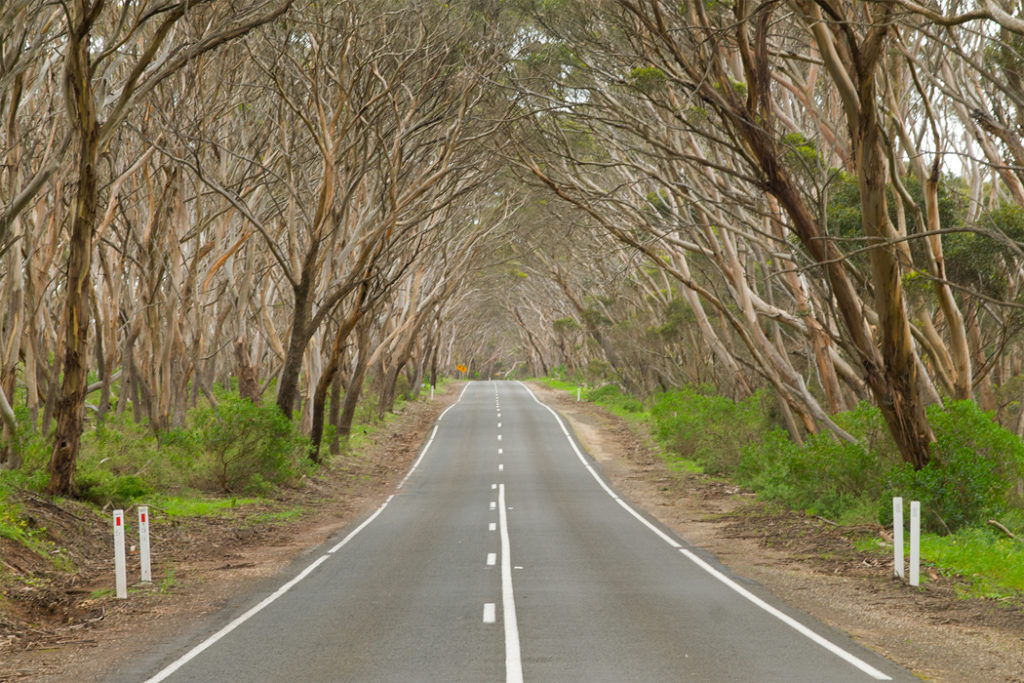
Glossy Black Cockatoo
Not only does KI have its own subspecies of kangaroo, but it also has its own subspecies of Glossy black cockatoo. Sadly KI subspecies is listed as Endangered, mostly because this parrot is a dietary specialist, feeding almost exclusively on the seeds of the drooping sheoak and only occurring where drooping sheoak is plentiful.
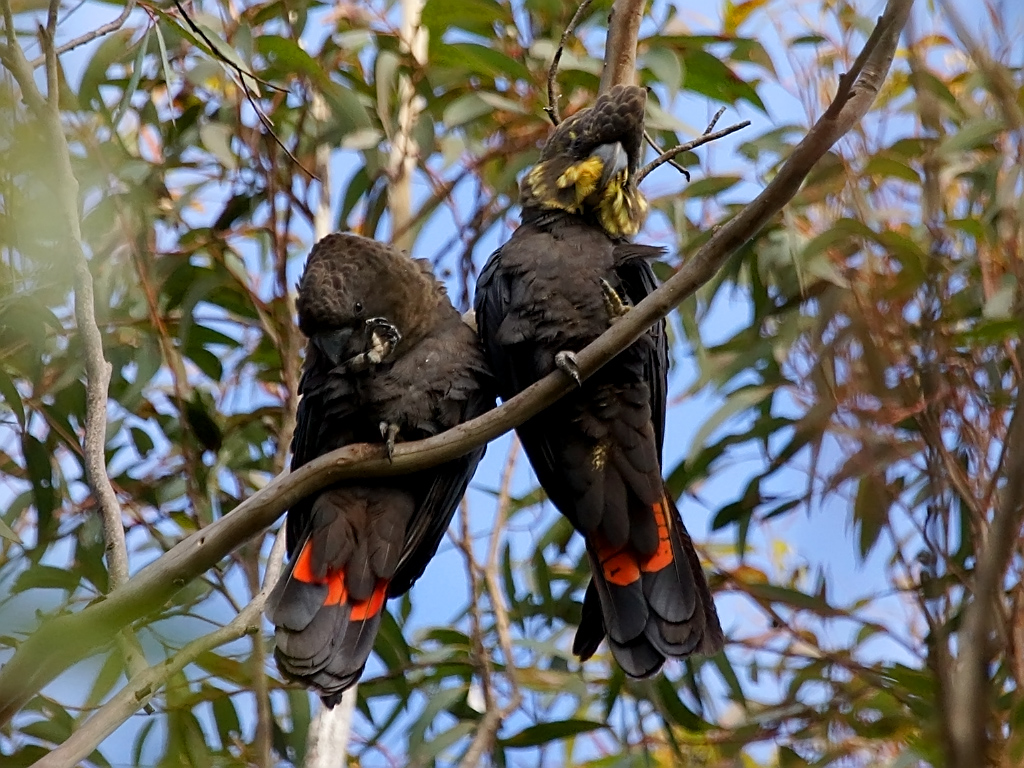
The Black Summer fires destroyed much of the birds’ nesting trees and food trees, yet amazingly In 2021, 377 glossies were counted on the island.
Chances are you will hear them before you see them. Like all cockatoos, they have a loud, conspicuous call.
Bottlenose Dolphins
Social and curious, Bottlenose dolphins are so of the most fascinating animals to encounter in the wild. And KI is the perfect spot to come face to face with them.
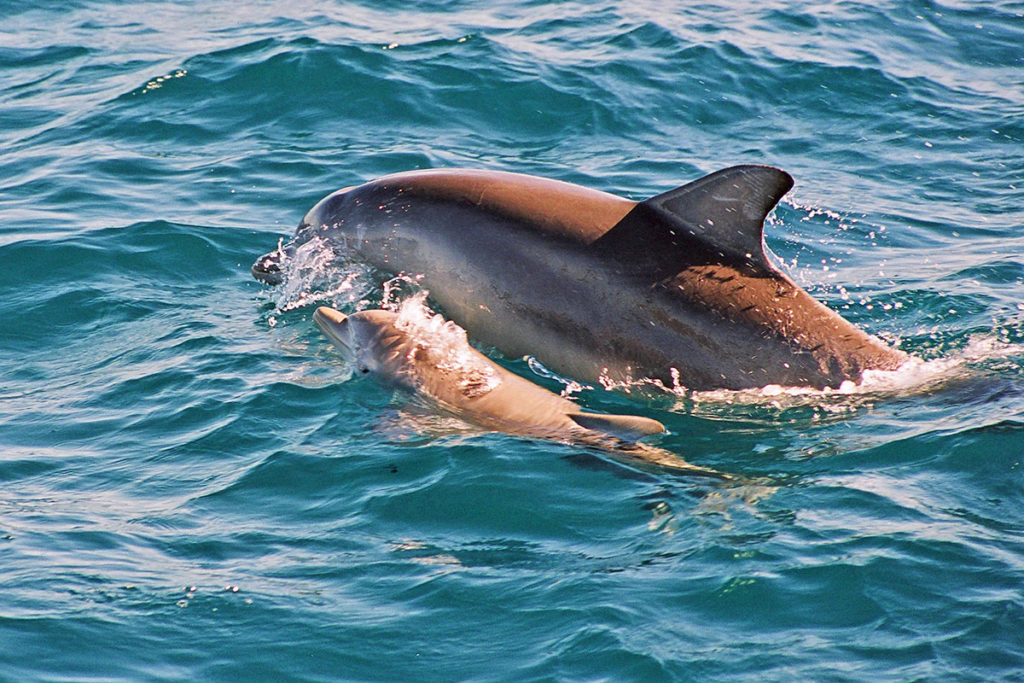
The north end of the island is home to a resident pod of bottlenose dolphins, and you can often spot them from the coast at Penneshaw.
But the best way to encounter Kangaroo Island dolphins, however, is on their turf – in or on the water. There are a couple of different cruise options available at Christmas Cove marina at Penneshaw. Depending on how much time you have (and how much you can spend), you can take either a 2-hr cruise that includes an opportunity to swim with the dolphins or a shorter cruise to observe them from a boat.
And, of course, bottlenose dolphins are not the only creatures you’ll spot on a cruise. You’ll also likely encounter fur seals, common dolphins, sea eagles, and all manners of what a friend of mine calls ‘sea monsters’.
Whales
In the waters around Kangaroo Island, you can see two species of whales: Southern Right Whales and, less frequently, Humpback Whales.
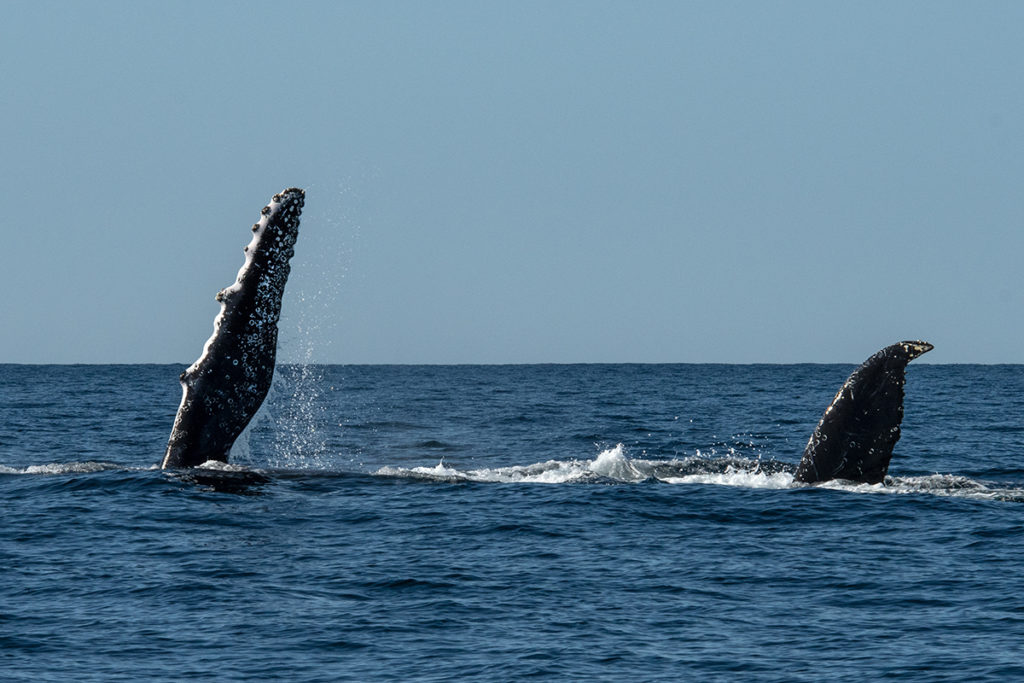
Both species undertake an epic migration each year, travelling between their feeding grounds in Antarctica and their birthing grounds along the Australian coastline. Most of the whales you’ll see off KI will be the Southern Right Whales. Which is great news for any East coasters who are spoilt for Humpback whale watching opportunities.
The best time to see the whales is between May and September. And the best way to see them is on the 2-hr Ocean Safari cruise. If you are lucky, you might also spot them from the ferry on your way to and from the Island (I did!).
And if you want to try your luck spotting whales from shore, then Penneshaw, Kingscote, Vivonne Bay, Seal Bay, and Cape du Couedic are all good options.
Black Swans
Black swans are common around Australia, but they are such striking birds to see. On Kangaroo Island, they move about with seasons. In winter, they occupy the wetlands, building elaborate nests of sticks and twigs. In spring, the parents are followed by the fluffy grey cygnets. And in summer, when the wetlands begin to dry up, the swans move to the American River and congregate there in large numbers.
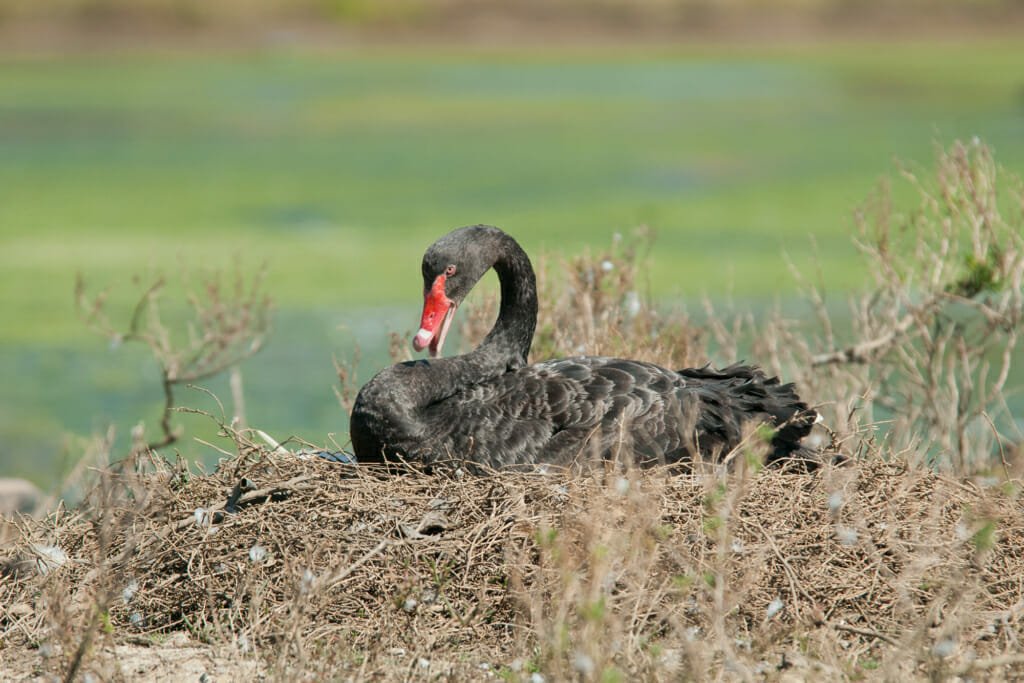
Seeing black swans in the ocean is always such an unexpected sight. The first time I saw a family of black swans in the surf, at the Edge of the World, in Tasmania, I couldn’t believe my eyes. I stared in disbelief as the parents were teaching their grown chicks to take off from rough surf. At KI, the surf is much gentler, of course.
Shearwater
Kangaroo Island is an important Migratory Marine Bird site. One of the most spectacular migrations to see on Kangaroo Island is that of hundreds of thousands of Short-tailed shearwaters travelling between Australia and Alaska each year.
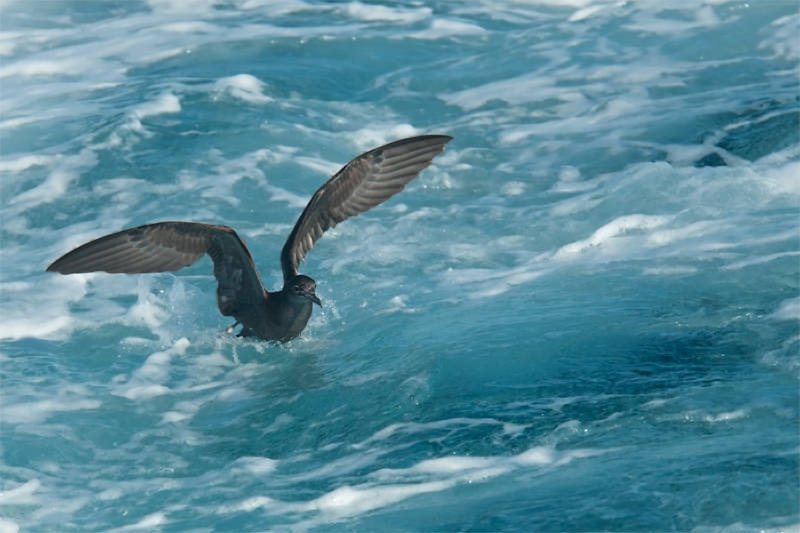
Also known as ‘Mutton birds’ the shearwaters fly along the southern coastline of the island at an estimated rate of 20,000 birds per hour. They head to Alaska in September and October and return to Australia in April and May.
The best time to observe the migration is at dusk, when you can watch an undulating stream of birds against the background of the setting sun.
Red-necked Avocet & Other Shorebirds
Kangaroo Island is a great place to see waders – birds that feed by wading through the shallows, including the dainty Red-necked avocet. You can see them in winter and spring on Bay of Shoals lakes, in Murray Lagoon, and in the MacGillivray Wetlands.
Kangaroo Island wetlands are teaming with life in winter when the water level is high. Many migratory waders and shorebirds arrive from their breeding grounds in the Northern hemisphere to feed on the abundance of aquatic vertebrates in KI’s wetlands.
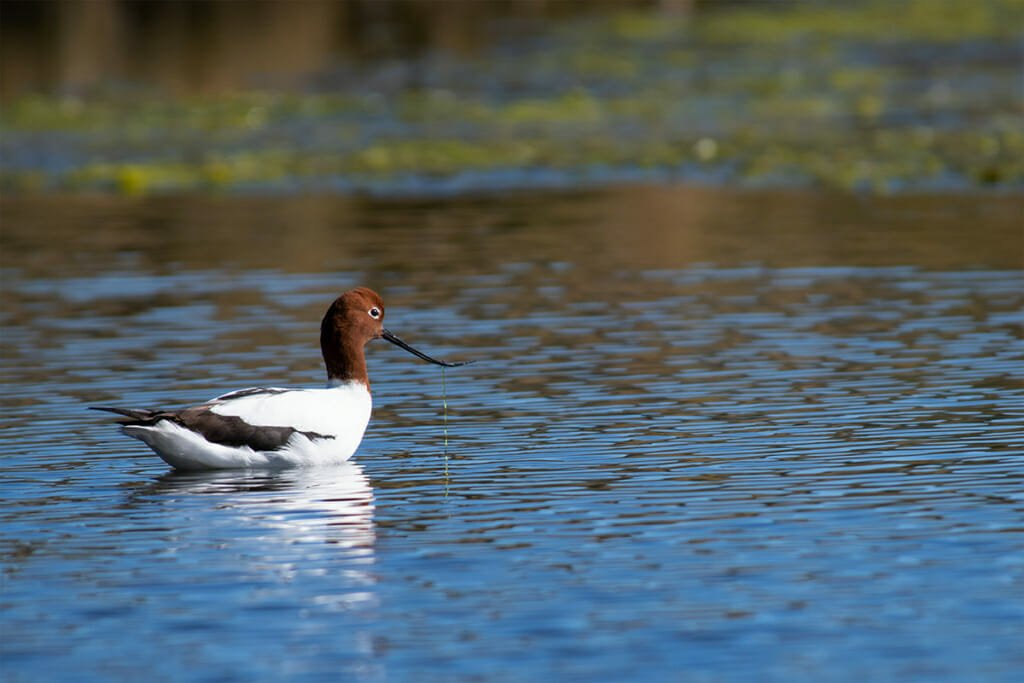
Local species breed in summer on KI. Hooded dotterels, in particular, nest on the island’s beaches, so make sure to pay attention and not disturb the birds.
Leafy Sea Dragon
The dainty Leafy Sea Dragon, or Leafy, is one of the most magical and rare sea creatures and the waters of Kangaroo Island are one of the best places to see them.
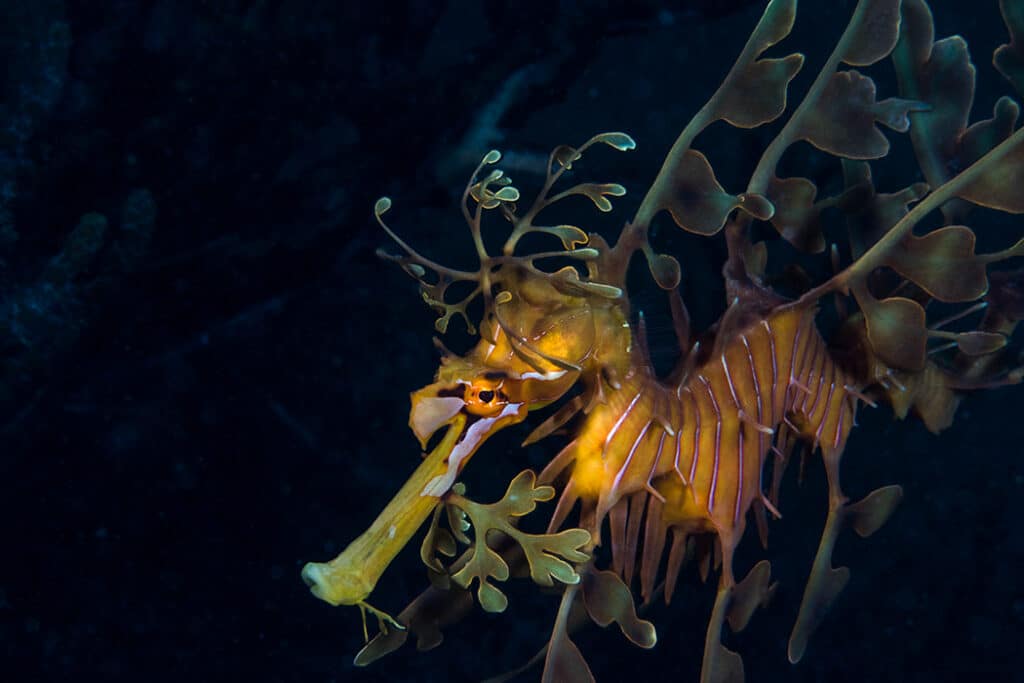
The best time to see Leafies is during their mating season between October and January. If you are lucky, you might see their amazing courting dance. After which, dad is in charge of raising the kids.
However, just because the sea dragons are there doesn’t mean they are easy to see. Masters of camouflage, they blend perfectly with their surroundings. To maximize your chances of spotting them, it’s best to take a guided dive with Kangaroo Island Dive and Adventures located in Kingscote.
And there you have it, 15 iconic Kangaroo Island animals to spot on your trip to the island. If you have any sightings to share, post them in the comments befow.
More nature adventures in South Australia
- 15 Kangaroo Island Animals and Where to See Kangaroo Island Wildlife
- Adelaide to Darwin Road Trip: Ultimate Wildlife Safari in the Australian Outback
- The Breakaways, Coober Pedy & the Dingo Fence
- Finding Wildlife in Flinders Ranges, South Australia
- Wildlife Survey on the Eyre Peninsula, South Australia

